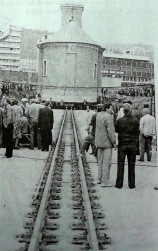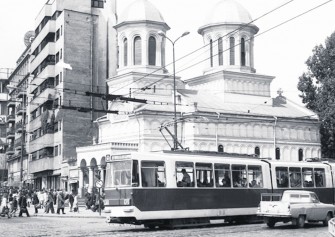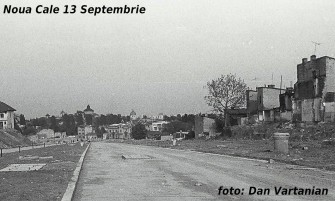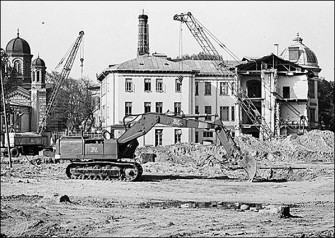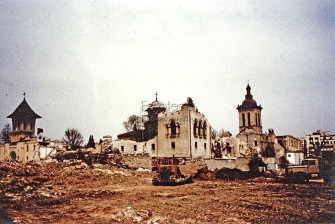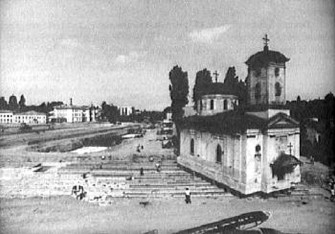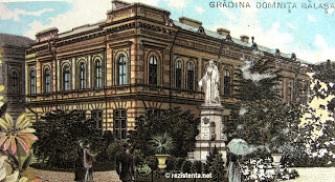Destroyed Bucharest - Vacaresti Monastery
There’s much of this city that’s no longer there, both in terms of tangible heritage and human approach. In a way, the latter has been altered by changes in the former. I am going to use a sample to illustrate this opinion.
VĂCĂREȘTI MONASTERY
The building. The monastery was built in 1716-1722 by Nicolae Mavrocordat (the first Phanariot ruler of Wallachia) on a hill overlooking Dâmbovița River and the road from Giurgiu. The whole assembly was set up in Brâncoveanu style, considered to be the greatest and biggest Orthodox settlement on the territory of actual Romania at the time. Alongside with the monastery proper, the settlement also included a princely court, a chancellery and a library endowed with the richest collection of books and manuscripts in South-Eastern Europe at the time. After the son of Nicolae Mavrocordat accomplished his father’s work, the monastery complex covered a surface of 18,000 sq. m., bearing two premises: one would enter through a well balanced tower in the small yard, then, through the gate under the 30 m. tall bell tower would enter in the main yard, where the church lie: the 41 m. long church, which was bigger than any other church (bigger than the Metropolitan Church on the Patriarchy Hill one can see next to Unirea Square today). Sustained on stone columns decorated with rich floral elements typical for the Brâncoveanu style, the church had 2500 sq. m. of frescoes on the inside, with a stunning harmony of colors. A few frescoes and the embroidery from the iconostasis can still be seen in a special hall entitled “Văcăreşti Memorial” in the National Art Museum of Bucharest. Other masterpieces of the monastic settlement involved the paraclis (the ruler’s chapel), a vaulted gallery (the most ample colonnade in the Romanian church architecture ever), as well as a, 18th century type of kitchen. A French traveler (Jean Claude Flachat) mentioned in 1740 that Văcăreşti Church was “the most beautiful in the Orthodox world”. Starting with 1848 the monastery was turned into a prison where former President Nicolae Ceaușescu seems to have been imprisoned also when he was young. In 1973 the prison was moved and restoration works started, with the plan of settling there a Museum of the Romanian Culture. All nice so far.
The destroying. Using the pretext of the damages done by the 1977 earthquake, the communist rulers started to demolish Bucharest, in a “systematization” fever. Upon a “working visit” on December 2nd, 1984, President Ceaușescu and his pack visited the site for the first time and (probably remembering the time when he had been imprisoned there), pretending that the church had suffered irremediable damages because of the earthquake (fact denied by specialists), he ordered the church to be razed off the ground and the main Court of Justice in Bucharest to be built there (even though the area lay at a quite big distance from the city centre and moving there the central Court was useless); this also meant that the Court of Justice in the centre, another historic building, was about to be razed off. As several architects and historians opposed, sabotaging and making it difficult for the communist bureaucratic legal system to work out an official reason for demolishing the monument, taking advantage of the New Year, the communists had the church steeples demolished on December 30, 1984 without any official record. On January 21st, 1985, the communist leaders invited top architects to reach a consensus and, taking advantage of the fact that the main opponents were involved in the talks, had the main steeple over the pronaos demolished. As the opposition raised and international reactions became louder and louder, given the general destruction of Bucharest and of other main cities, the leaders placed in the monastery the film set for a war movie (March 1985), allowing the crew to use all the petards and war equipment possible, so that many original decorations, sculpted ornaments and frescoes were destroyed.
Epilogue: Between 1979 and 1989, hundreds of thousands of people were moved from their houses, a total of 22 churches were destroyed, translated or mutilated, a fifth of Bucharest’s old area was destroyed, while most of the other old areas were hidden and brought to ruin by putting Gypsies to live in. Major architectural achievements such as Unirea Market Hall, Brâncoveanu Hospital, the Central Military Museum, the Operetta or Mina Minovici Institute were razed off during the late 70s and – especially – during the 80s, when a simple “working visit” of President Ceaușescu could mean the razing of an entire quarter and the raise of useless, as huge as possible and as square / grey as possible buildings disregarding of the implications these actions could have on the community.
Regarding to Văcărești Monastery, some of the pieces that were saved from destruction (pieces of columns, stone carved decorations) are stored near Mogoșoaia Palace (samples of frescoes are also exhibited in the cellar there at times), while other remnants are hosted in an interesting In Memoriam Room at the National Art Museum - the Romanian Art Wing. Some pieces are also hosted at the Collections’ Museum (in the Lapidarium). Click here for a few samples of frescoes removed from the monastery before its demolition (exhibited at Mogoșoaia Palace in April 2012).
N.B. Pictures here above have been taken from Professor Dinu Giurescu’s “The Razing of Romania’s Past” (WMF / US-ICOMOS, London 1989); thank you! I recommend this book to those Romanians that tend to forget easily: a nation’s sleeping generates monsters. Just look around you and dare challenge your memory.



